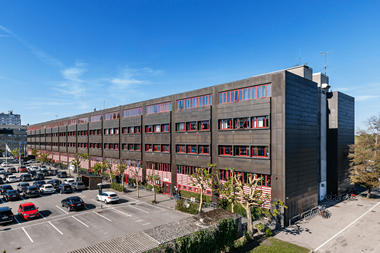The European Association for Investors in Non-listed Real Estate Vehicles (INREV) held its second North American seminar in New York City last week, bringing the latest thinking from the European markets to a US audience.
“We are all coping with the same chances and challenges in the industry,” said Patrick Kanters, INREV chairman and managing director of global real estate at APG Asset Management.
European markets are contending with the “Three Lows”, said Mahdi Mokrane, regional director and head of European research and strategy for Investment Management – low growth, low yields, and low development pipelines – but he stressed that pockets of opportunity existed across the continent. However, just as in the US, it is difficult to find product and deploy capital, he noted. “What would have attracted two or three bids a few years ago today would attract a dozen,” he warned.
One European bright spot is that “the office development pipeline is very subdued, so the outlook for prime rental growth remains robust”, Mokrane said. One major differentiator between the US and Europe is that there are significant planning restrictions in Europe that have constrained development; Mokrane contrasted New York City’s crane-filled skyline with that of many European capitals.
While London, Paris, Frankfurt, Munich, and Stockholm are attracting the most investment, as investors search for safety, Mokrane said that investors willing to move slightly up the risk curve could look at former crisis countries and smaller markets, as well as tier-one and three cities in Western Europe, such as Madrid and Barcelona (where values are 50% below pre-crisis levels), or Lyon, Milan and Vienna, and even secondary assets.
Higher yielding investments are intriguing to US investors, said Tommy Brown, partner at LGT Capital Partners. “Tax and currency make it difficult to go to Europe, so it’s a return play there, such as opportunities with broken capital structures,” he said.
Scott Silverberg, senior vice president and senior director, real estate group, NLI International, agreed, speaking from the perspective of a Japanese investor increasingly interested in international diversification. “We are getting a lot of pressure on the core side to get the returns we need to compensate for currency and geopolitical risk,” he said. “But Europe offers the opportunistic side as well as the core side.”
Noel Manns, principal at Europa Capital, discussed the regulatory challenges facing opportunistic managers in Europe, predominantly in the form of the Alternative Investment Fund Managers Directive (AIFMD), which has imposed new requirements on general partners. Regulatory requirements mean that the entry price to be a manager in Europe is much higher than in the US.
“It’s true that there was an oversupply of managers and we needed a shake-out of some of the weaker players,” Manns said. “But regulation has made it more and more difficult for new managers to be created. People will go to big funds for safety, but we need to find ways for niche managers to get into the market for the health of the industry.”
Amid the regulatory changes and market competition, the debate around investing directly or indirectly continued. Brown said there was widespread acknowledgement of the difficulty to execute direct deals in Europe, particularly for foreign investors. “If you are of size you have the ability to do things directly,” said Brown. “Some of the larger US investors are thinking of going direct. There’s appetite but it is a little harder to execute.”
European investors are also looking to indirect investments. Kanters said APG, which has undertaken a number of joint venture deals in recent years, said it was “not targeting direct deals going forward”. He added: “We would rather rely on managers and have the flexibility.”














